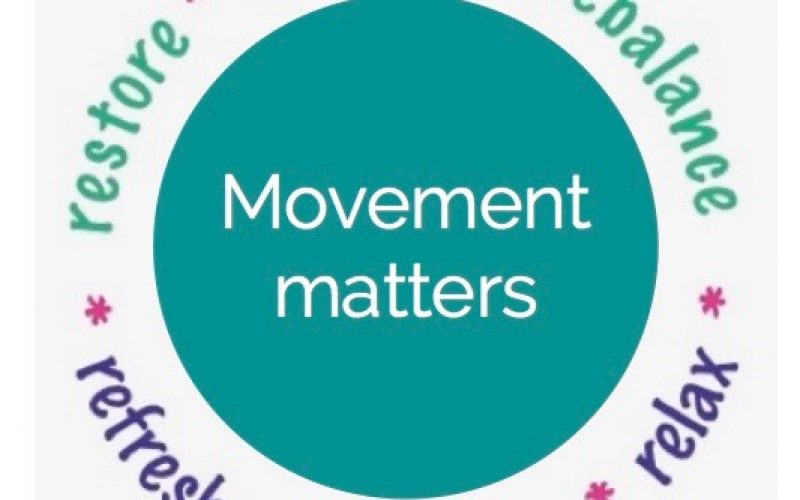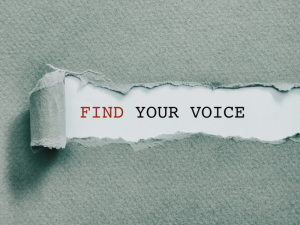As an osteopath and Pilates teacher movement is always the first and most important goal I consider in my treatment plan. We need to get blood and other body fluids moving to naturally lengthen, contract and relax muscles. With the simple aim to create strong, flexible bodies and building resilience for everyday activities.Supporting people to find improved spinal health means they have to move, starting on the mat may not always be functional but its a useful and safe place to start especially for people who are “working out” at home on their own.
Movement matters is the blog section dedicated to getting you moving. Exercise hacks (*) are 5 -10 minutes offerings of simple home movement or ‘exercise’. Taken from my toolbox of somatic movement, osteopathic practice, Pilates exercise repertoire, personal and clients favourites.
* Life hacks refer to shortcut or methods that increase productivity and efficiency, our exercise hacks are designed to do the same, or just make you feel great.
Health and safety:
Are you in pain? If you are currently experiencing back pain, please consult with your GP or healthcare professional for advice before starting these or any exercise program.
Preparation; starting positions
Relaxation position or semi-supine lying
- For comfort use an exercise mat or folded blanket.
- Lie on your back with knees bent, and feet flat on the floor hip distance apart.
- The spine should be in neutral if this is comfortable
- Support your head with a cushion, folded towel or similar; your neck should feel relaxed and lengthened at the back.
- Arms by your side or resting gently on your lower ribs
Side-lying starting position
- Lie on your side with knees bend and stacking shoulders, hips, Kees and ankles.
- Lengthen your arm underneath your head and in line with your spine.
- Place other your hand on the mat in front of your ribcage and bend your elbow to help lightly support your position.
Tip: Double up your mat if needed. When balancing on the smaller surface area of your side, the trunk stabilisers and hip muscles are challenged. Lie against a sofa or wall if you need help with the position.
4 four point kneeling
- Start on your hands and knees, with the heel of the hands under shoulder joints keeping the arms long at the elbows without locking, allowing the wrists to flex. Knees directly under hips and feet relaxed
Breathing
- Try to breath using the whole rib cage with a focus on the lower ribs and diaphragm.
Exercise list
- Mini Pelvic Curls – Spine Curl
- Wash Rag Twists
- Oyster
- Pilates Cat
- Pilates Squat
Health and safety:
While you are working without the guidance of a teacher home exercise is your responsibility. Do not attempt these if you are in pain, and stop if you feel discomfort, dizzy or experience pain.
1. Mini Pelvic Curls – Spine Curl
Starting position: Relaxation position
Stage 1
- Exhale gently roll the pelvis so that the tailbone lifts a little and the lower back moves towards the floor with pushing. Stay in your comfort zone and focus on the bones that are moving. Inhale and hold this position.
- Exhale as you slowly return to the starting position Inhale and pause
- Repeat 5 times
Stage 2
- While exhaling, curl/move and then lift tailbone and pelvis upwards ceiling, continue to raise pelvis and spine from the floor. Plant both feet firmly on the floor to ensure that both hips remain symmetrical.
- While inhaling, hold the top position.
- While exhaling, roll back down, starting from the shoulders, keep both feet firmly on the floor
- Repeat 5 times



2. Wash Rag Twist
Starting position: Relaxation position, with arms straight out from your shoulders in a T shape.
Movement: Upper Body
- Roll your shoulders and arms to turn one palm to face the ceiling and the other to meet the floor.
- Turn your head to face the open palm.
- Repeat 5 times to each side
Movement: Lower Body
- Inhale, allowing your knees to drop to the side. Don’t force the movement to let it come from relaxing your waist muscles.
- Exhale and engage your abdominal muscles when rolling your knees and heading back to centre.
- Repeat 5 times to each side
Upper and lower body combined, wringing yourself out like a washrag.
- When you are ready to put the two movements together
- Inhale, allowing your knees to drop to the side, and let the same side palm to turn down. Turn your head n the opposite direction with that same side palm facing
- Continue this movement, your arms rotating gently in the opposite directions to your legs.
- Repeat 5 times to each side


3. Oyster
Note: When balancing on the smaller surface area of your side, your torso (trunk_ stabilisers and hip muscles are challenged. Lie against a sofa or wall if you need help with the position.
- Inhale and relax, keep your feet together, lift your top knee in an arc, without moving your pelvis.
- Exhaling, keep your feet together, lift your top knee in an arc, without moving your pelvis. While Inhale and slowly lower the leg.
- Repeat 5 time each side

4. Pilates Cat
Starting position: 4 four point kneeling
- Exhale, roll the pelvis slowly rounding the whole spine up towards the ceiling allow the head to release down so that you can look through your knees. Keep thighs still, elbows soft (slightly bent) and shoulders relaxed (don’t push through your shoulders).
- Inhale and hold the position.
- Exhale keeping stabilising muscles engaged (just 25%) and gently return to the mat


5. Pilates squats
- Starting position: Stand tall on the floor (not on your mat)
- Lengthen your spine into neutral.
- Your legs are in parallel and hip-width apart.
- Allow your arms to lengthen down by the sides of your body.
- Maintain an appropriate level of connection to your centre throughout.
- Inhale, lengthen your spine and send your hips back to bend your knees, feeling the deep crease in the front of your hips. Your torso will tilt forwards slightly. Simultaneously allow your arms to lengthen and lift up to shoulder height.
- Exhale grounding your feet down to the floor, straighten your legs and return your spine to the upright starting position, simultaneously lower the arms back down to your sides.

Final tip:
Practice 2 -5 times a week to see and feel the best results, but any extra mindful movement is another step towards taking better care of yourself.
Photo refs: Rehabmypatient
SaveSave
SaveSave
SaveSave
SaveSave
SaveSave
SaveSave
SaveSave
SaveSave
SaveSave
SaveSave
SaveSave
SaveSave
SaveSave
SaveSave







